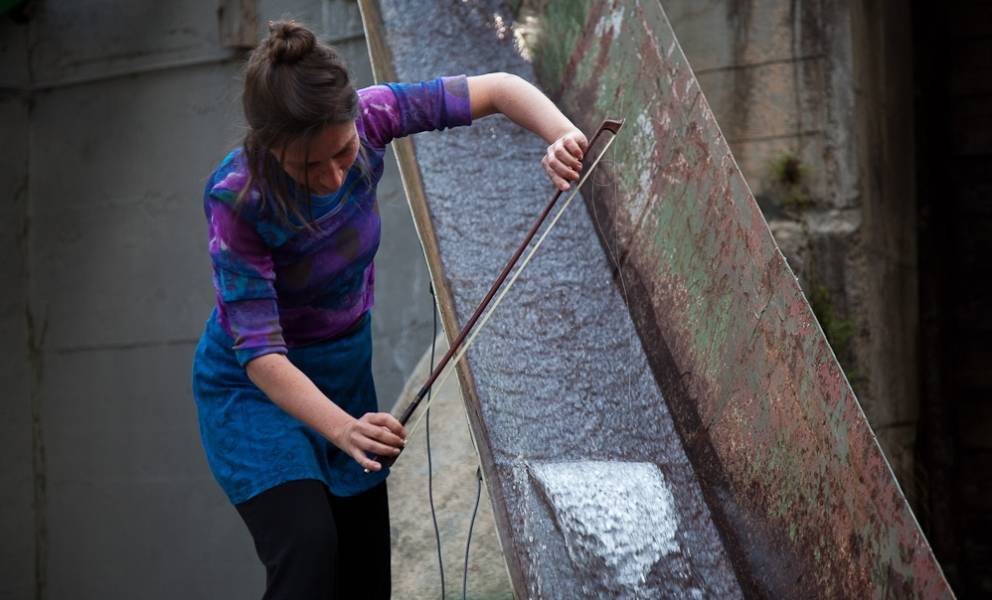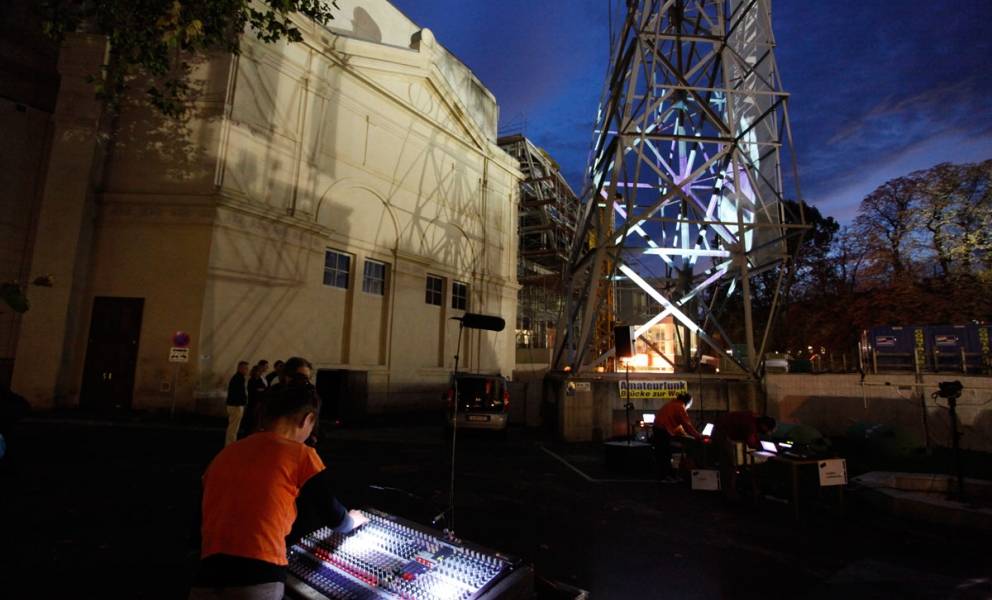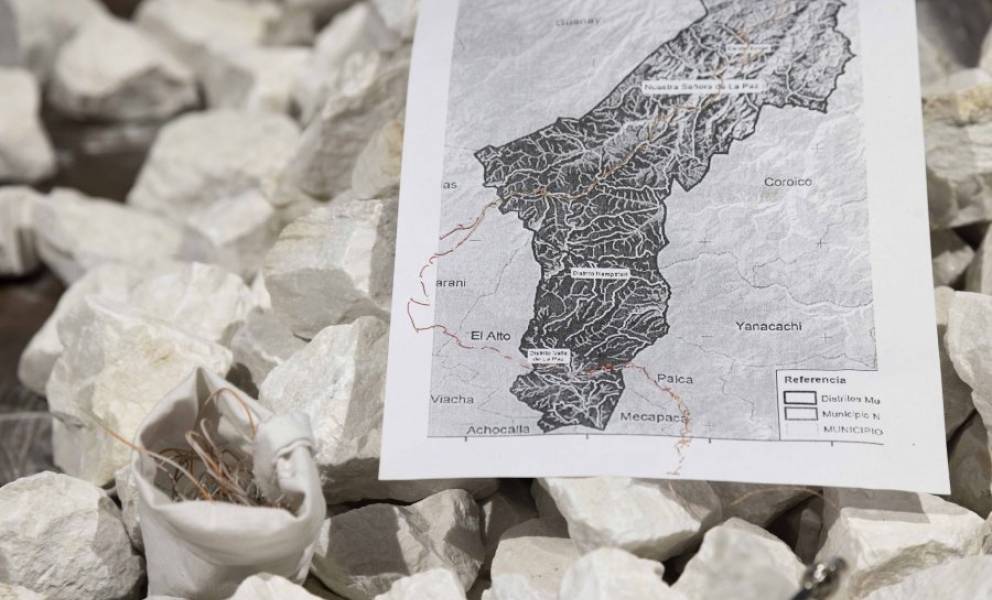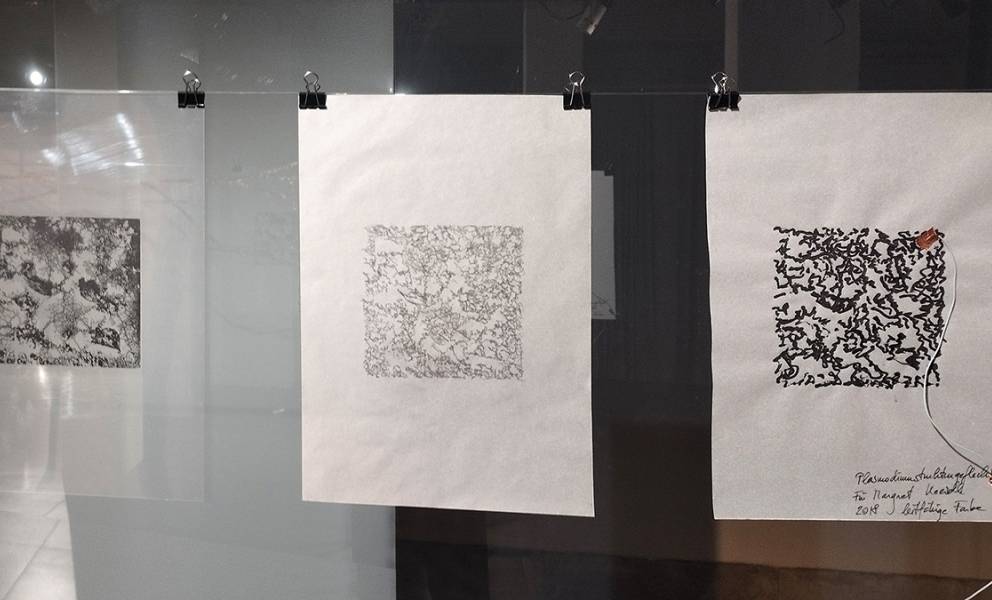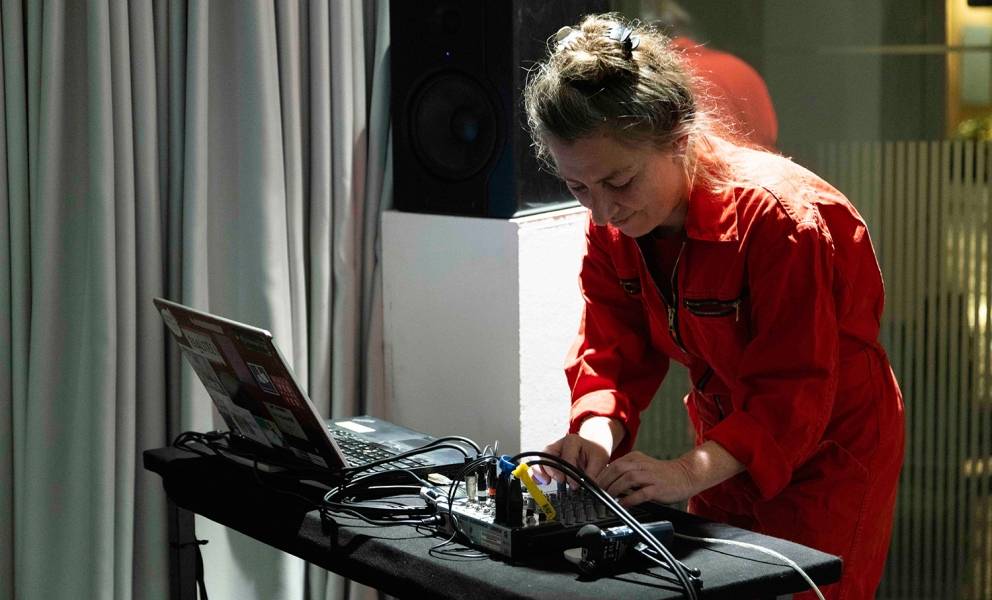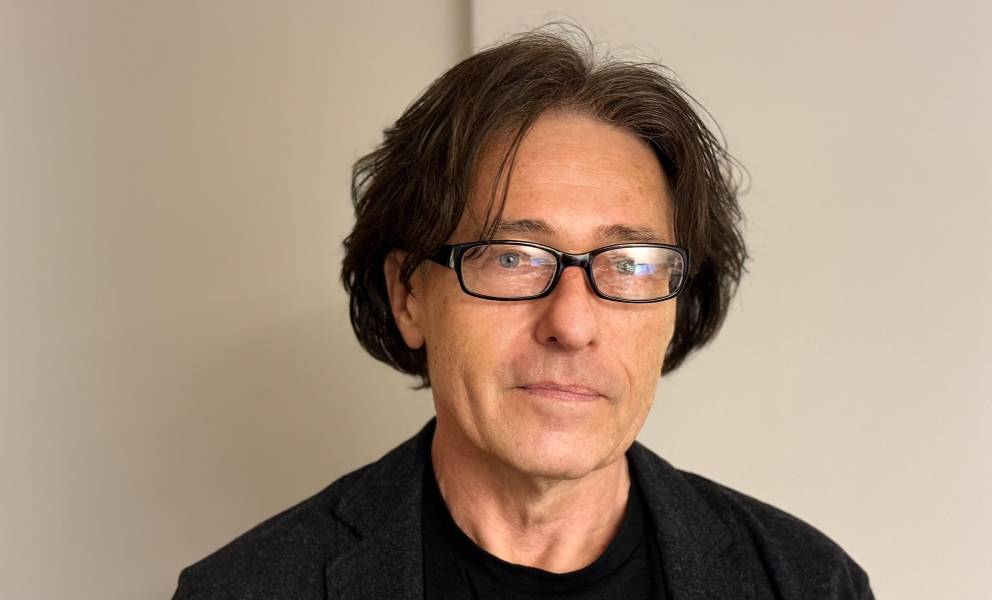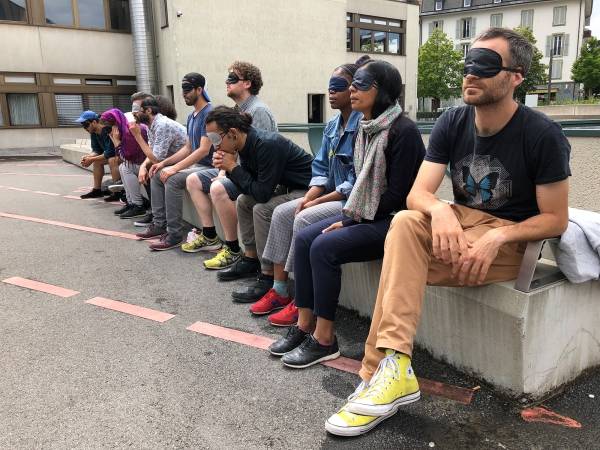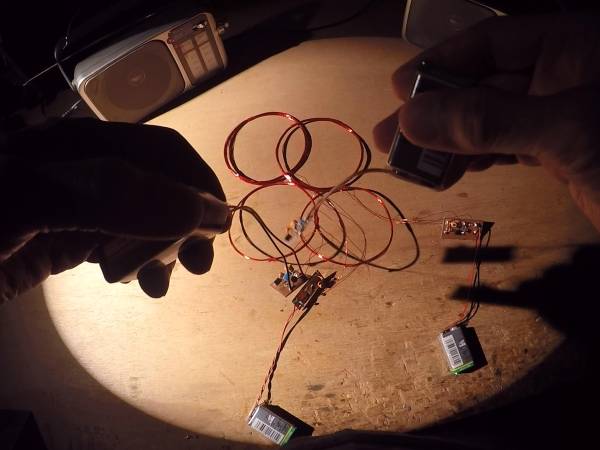8 Minuten
If you want to find the secrets of the universe, think in terms of energy, frequency and vibration. –> Nikola Tesla
Deep and wide, magical, fleeting and touching, these are the electro-poetic worlds of sound that Reni Hofmüller opens up with the antennas of her Resonating Sculptures. Radiation emissions from the natural and man-made world, the cosmos and the technological environment transformed into sounds: hissing, crackling, fizzing, whistling, vibrating, clanking and clicking, buzzing, humming, pulsating and rumbling, voices, tones and sounds from the radio.
The sculptures are mobile, small, heavy, expansive, they reference places and spaces for which they were designed, and they each have their own genesis. These are reflected in the forms as well as the spectrum of what they receive. Eight Resonating Sculptures have been created over the past eleven years.
Portfolio
Reni Hofmüller works as an artist: musician, composer, performer, organiser, curator, feminist, activist (in the fields of [new] media, technology and politics), she is a radio producer (formerly a radio pirate), amateur radio operator (ID: OE6TLE) and active in the field of free software and open hardware. This portfolio of interests and activities perhaps plays more of a role than is usual in her actual artistic commitment. Specifically, the models for the antennas and related expertise are rooted in the radio piracy of the early 1990s, when mobile antennas were used for temporary interventions (and – euphemistically speaking – allowed the mobility these required).
Antennas
An antenna is a device for transmitting and receiving electromagnetic waves. In the material that Hofmüller taps into, the shares of the natural and intentional world in the entire spectrum are mixed – from cosmic background radiation and particle radiation from the sun and galaxies to atmospheric phenomena and the artefacts of noise in the actual state of civilisation through radio, mobile telephony, WLAN, GPS, satellite broadcasting, induction hotplates, UV and X-ray radiation etc. pp. As a precision tool related to a preferred frequency spectrum, an antenna is a technoid, purpose-determined structure; intention is formalised in it – for example the reception of FM. Natural occurrences of antennas also exist in the form of conductive structures – copper veins in a mountain, random constellations of conductive material ...; they exist (as antennas) as soon as they receive and thus prove to be autodefinite, in a certain sense "autopoietic". This also explains the dual role of antennas as tools and objects in Hofmüller's research interest: Artistic excursions into a world that determines the ontological status of the medium that makes the endeavour possible bring the medium itself almost inevitably into focus.
Resonances
In addition, the function of a communication instrument is the basis for binding principles for use and development in the artistic context: communication, collaboration, co-operation ... principles that are not only characteristic of Reni Hofmüller's work in the figurative group of works, but which the artist has formulated more radically here than elsewhere. This is most evident in Playing the Building (2008 – 2012), a series of sound performances based on vibrating (resonating) building parts that preceded the Resonating Sculptures group of works. Even inanimate matter was included in a lively exchange on an equal footing.
From a physical point of view, resonance occurs when a body is caused to vibrate or is stimulated to resonate by external frequencies (equal to its natural frequency). A highly metaphorical behaviour in itself, resonance in Hofmüller's projects is both an intentional state and a means. The interweaving of physical-technical, social and metaphorical elements to form "oscillating systems", which characterises the Resonating Sculptures group of works, has one of its foundations in this.
Hand lines, hand signs, actions
Den Beginn markieren Resonating Sculpture und Resonating Sculpture - Handarbeit
Resonating Sculpture1, created for ORF musikprotokoll 2012 – a "hack" (E. Zimmermann) of the object "Lichtschwert" by Hartmut Skerbisch, a steel skeleton based on the interior construction of the American Statue of Liberty on a scale of 1:1 in front of the Graz Opera House2. Based on the object, which was repurposed as a transmitting and receiving antenna, a situational scan of the electromagnetic waves (i.e. also depicting local environmental conditions) was transformed into sound and transmitted by radio to various receiving stations; the responses were mixed and integrated into a dynamic loop. The radio version Echo (Ö1 Kunstradio) involved 15 amateur radio operators who, among other things, provided (reception-specific, i.e. as usual, influenced by weather and/or ionosphere) recordings of the artist's first performance in Graz as (again broadcast-specific) material for her radio performance.
Resonating Sculpture (Lichtschwert), ORF musikprotokoll im steirischen herbst 2012
Resonating Sculpture II, Handarbeit – a reminiscence of the improvised transmitting antennas for radio piracy and radio: easy-to-handle tarpaulins with glued-on aluminum foil strips – adopts the idea of lifelines of the hand as an expression of human individuality (related to the fingerprint) and realizes the lines of the artist's left hand in the functional context of an antenna. (Contribution to Visions of Media Art, Vienna 2016, in homage to Robert Adrian X.)
Resonating Sculpture III, Zuneigung, with the lifelines of the right hand, was, for example, built for the project Emotion + the Tech(no)body at the Austrian Cultural Forum London 2017 and played as part of a collaboration with the US-American artist, radio producer, and sociologist Karen Werner in her project Haus, 2017 – 2018.
The hand antennas illustrate not least one of Hofmüller's underlying intentions for the entire series, namely to make the (also) physiological connection of each individual with the diverse natures of their surrounding worlds accessible as a real gesture: the interpretation and reinterpretation of the body as an instrument that at least reveals what people otherwise have no senses, no sensorium for.
Types of play
The sculpture Lichtschwert/Lightsaber by Skerbisch is the only antenna in the series to have a predefined shape so far. For subsequent projects, the form-finding process was decisive in the development of the often expansive antennas. Personal history can play just as much a role as social, communicative action – processes that not only become effective in the sculptural context of meaning (in terms of content, and form), but also determine the reception spectrum and thus also the sound events as a result of the final shape of the antenna. An antenna does not distinguish between artificial, intentional, and natural electromagnetic waves. However, its characteristics and the resulting interaction with its environment influence the implicit, or "latent", auditory form.3
In addition to the so-called hand antennas, Resonating Sculpture VII – Schälung and IV – Plasmodiumstrukturgeflecht are representative of this.
Schälung was created during an antenna construction workshop at the Sonandes Sound Art Festival in La Paz, Bolivia. The first task was to exchange ideas on the meanings that an antenna could have beyond its technical and functional use; the next step was to develop usable examples with readily available material – a good source was found in an abundance of disused electrical cables. In the course of the discussions about local living conditions, a small antenna was created as a tribute to the participants during the collective process of "cable peeling": a b/w print of a map of the watercourses in the province of La Paz embroidered with threads from the copper cables.
Resonating Sculpture VII - Peeling, Sonandes, La Paz/Bolivia 2022
Plasmodium structural meshwork is based on a kind of family constellation in miniature in the form of oat flakes, the "favorite food" of the slime mould. This unicellular organism moves to meander in search of food and maintains a connection with its starting point in traces. These traces (this network of relationships) and their transfer into a graphite drawing and one with conductive color form the interface.
Parallel to the development of mobile antennas consisting of a delicate fabric interwoven with copper bands, which are used purely as a performance instrument, antennas made of bamboo, reeds ..., or material sprayed with copper particles, which reference the place where they are used in the performance, were created.
The term sculpture is interpreted systemically by Hofmüller's antennas. It encompasses the various modes of derivation of the form as well as the functionality inherent in the technical form and the acoustic or auditory form that is latently "resonating" within it. This becomes temporarily concrete in concertante form. With each new antenna comes the opportunity to make something new audible. Through the other, the new, that has not yet been received, and that which may be received in the future, this time window opens up a space of possibility whose metaphorical frequency potentially begins to resonate.
Performances / Practice
Hofmüller sees her Resonating Sculptures as a musical instrument of a probabilistic nature. Similar in playability to a piano, which experienced musicians work their way through, the antennas bring chance, the unpredictable, and probabilities into play.
In the Resonating Sculpture installations, the software "oscillates" independently through the entire frequency range; for her performances, the artist uses a simple USB-based receiver that receives a wider bandwidth than just radio; the (free) software makes it possible to determine which frequency range should be listened to more closely. Electromagnetic events in the respective neighborhood (e.g. the switching on and off of a radio, weather phenomena, or mobile phones) are also detected through interference and integrated into the sound. Knowledge and experience of "where" various sound events and qualities can be expected to act as the quasi-keyboard on which the music is played. Hofmüller: "The world opens up for me from my world of sound."
Resonating Sculptures Performance, Reni Hofmüller, esc medien kunst labor, Graz 12/2023
Resonating Sculptures, Reni Hofmueller - Excerpt / recorded 12/2023, esc medien kunst labor, Graz
About Reni Hofmüller
Reni Hofmüller, * 1966, Hall in Tirol – has lived in Graz since 1989. Hofmüller is a media artist and works mainly with sound (live performance, installation, radio composition); one of the main areas of interest is the topic of space. This includes both physical and media spaces. At the esc medien kunst labor Graz (https://esc.mur.at), where she has been active in program conception, design, planning, and mediation since its founding in 1993, the operators concentrate on art in a technological context. This also includes the examination of public space as a social project and place for artistic intervention. In her engagement with radio and the Internet, she is primarily concerned with concepts of free software, open source, and open hardware. Hofmüller was instrumental in the creation of Radio Helsinki, the free radio station in Graz, as well as mur.at (a platform for the non-commercial use of the Internet for artists and cultural workers) and is still active in both institutions.
- 1
Together with Jogi Hofmüller, Christian Lammer and Patrick Strasser.
- 2
H. Skerbisch based the sculpture, which features a sword instead of a torch, on Franz Kafka's novel fragment "Amerika".
- 3
An object that is founded in its function and can be perceived by the senses also exists quasi-gradually in the mode of its function that is inaccessible to the senses. To recognize a piano as an instrument, it needs the experience of the music production associated with it, otherwise, it would be in the mode of an object, a thing. As a piano, it "realizes" itself in the state of its appropriate use. An antenna receives analog in permanence. This (from the point of view of understanding it as a musical instrument) is a physically concrete, naturally highly unsteady score. In the quality of the appearance of a possible transformation into sound, this auditory form - like copper, for example - is contained in the self-understanding as well as in the material existence of the antenna itself.
Heimo Ranzenbacher
Heimo Ranzenbacher (* 1958, Kapfenberg, Styria/A) lives as a freelance author and artist in Graz. He attended the Höhere Technische Bundeslehranstalt Graz, Department of Commercial Graphics, and studied stage design at the University of Applied Arts in Vienna and at the University of Music and Performing Arts in Graz. Since 1982, Heimo Ranzenbacher has worked as a freelancer for daily newspapers in Graz, first in the cultural sector and later (since 1990) in editorial area management. Heimo Ranzenbacher has published various works on the theory and practice of media art in books, catalogs and specialist journals and publications (most recently Liquid Music, 2007 and ALLtag, 2012, FIN /3 and FIN /2). He has given lectures at many symposia. From 1996 to 2009 he was editor of the book productions of Ars Electronica, Linz. In 1998 he founded the Liquid Music project, which he led until 2018. Since the early 1980s, Ranzenbacher has been active in the organization and implementation of various art projects, many of which are associated with science. His works have been shown at home and abroad (England, Singapore, Slovenia, Croatia ...) and at festivals (Steirischer Herbst, Ars Electronica ... ).
Article topics
Article translations are machine translated and proofread.
Artikel von Heimo Ranzenbacher
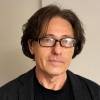 Heimo Ranzenbacher
Heimo Ranzenbacher 
